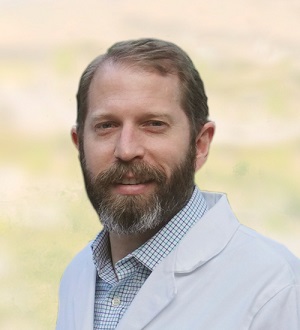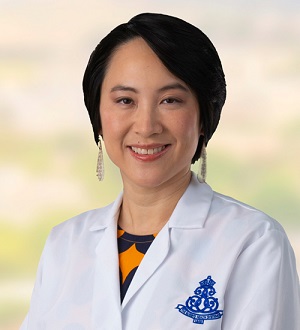
About
The University of Hawai’i Surgical Residency Program is an approved five-year general surgery training program accredited by the ACGME. The Program operates in an integrated and affiliated community hospital system in which patients are treated by University Faculty and University-affiliated, Private Surgical Attending Physicians with Clinical Faculty appointments. The training of all Surgical Residents takes place primarily in four Honolulu community hospitals.
During the first two years, residents complete a series of required rotations which prepare them to either continue their training in general surgery or in a surgical subspecialty. Throughout their five years of training, residents will have increasing responsibility for surgical care, culminating in their chief year, when they will assume total responsibility for patient care and administration of a surgical team.
In 1949, The Queen’s program was approved for three years of training and over the next ten years graduated one Chief Resident every year. During the 1950s one and two-year residencies in General Surgery were established at St. Francis and Kuakini Medical Centers. In 1959, largely as a result of favorable recommendations made by site visitor surgeons, the Conference Committee on Residency Training approved the Surgical Program at The Queen’s Medical Center for four years. In 1961, The Queen’s Medical Center joined with St. Francis Medical Center and Kuakini Medical Center, inaugurating the Integrated Surgical Residency Training Program. Residents rotated on services in all three hospitals, coming under the tutelage of a number of capable surgical teachers in both general surgery and subspecialties.
In 1972, as the University of Hawai’i John A. Burns School of Medicine grew and prospered, it gave impetus to the Residency Training Program and eventually assumed responsibility for the Program as the Institutional Sponsor. The first Professor of Surgery and first Program Director was Dr. Richard Mamiya who was instrumental in raising the number of residents to 20 and incorporating Straub Clinic and Hospital, Kauikeolani Children’s Hospital, and Kaiser Hospital into the integrated program. In 1972, the name of the residency program was changed to the University of Hawai’i Surgical Residency Program.
Program Directors
Dr. Richard Mamiya (1972-1974), Dr. Thomas Whelan, Jr. (1974-1990), Dr. J. Judson McNamara (1991-1998), Dr. George McPheeters (1998-2002), Dr. Danny Takanishi (2002-2015), Dr. Kenric Murayama (2015-2023). As of January 1, 2024, Dr. Chad Cryer became Program Director.
The Surgical Residency Program seeks to prepare Residents to become surgeons of the highest caliber by providing a rich educational experience in a variety of clinical settings. The three main program components – curriculum, research, and service – are structured to enable the resident to acquire the knowledge, skills, attitudes, and clinical judgment needed for the practice of general surgery.
Faculty & Staff
There are approximately 30 academic faculty, and 150 private surgical attending physicians appointed as clinical faculty members. In addition to the Directors of Surgical Education (DSE), there are division chiefs for anesthesiology, ENT, emergency medicine, neurosurgery, ophthalmology, orthopaedic surgery, pediatric surgery, plastic surgery, radiology, surgical critical care, surgical research, thoracic, transplant, trauma, urology, and vascular surgery. Faculty to Resident Ratio is 1.0:1.4.
Program Details
Rotation Schedule
The training of all Surgical Residents takes place primarily in five Honolulu community Hospitals: The Queen’s Medical Center Punchbowl (Manamana), The Queen’s Medical Center West O’ahu, Straub Benioff Medical Center, Kuakini Medical Center, and Kapi’olani Medical Center for Women and Children. Residents will also rotate at North Hawai’i Community Hospital located on Hawai’i Island (Big Island) during their PGY 3-4 years.
Typical Rotations (Subject to Change)
| PGY1 | PGY2 | PGY3 | PGY4 | PGY5 | |
| QMC Punchbowl (Manamana) | |||||
| General Surgery | 6 Blocks | 3-4 Blocks | 4-5 Blocks | 3-4 Blocks | 6 Blocks |
| ACS/Trauma | 2-3 Blocks | — | 2-3 Blocks | 1-2 Blocks | 2 Blocks |
| Surgical ICU | 1 Block | 2 Blocks | 1 Block | — | — |
| Night Float | — | 2-3 Blocks | — | 2 Blocks | 1 Block |
| QMC West O’ahu | |||||
| General Surgery | — | 2 Blocks | — | 1 Block | — |
| Straub Benioff Medical Center | |||||
| General Surgery | — | 2-3 Blocks | — | — | — |
| Vascular Surgery | — | — | 1 Block | 1-2 Blocks | — |
| Kuakini Medical Center | |||||
| General Surgery | 2-3 Blocks | — | — | — | 3 Blocks |
| Kapi’olani Medical Center for Women and Children | |||||
| Pediatric Surgery | — | — | 1 Block | 1 Block | — |
| North Hawaii Community Hospital | |||||
| Rural Service | — | — | 1 Block | 1 Block | — |
| Elective | |||||
| — | — | 1 Block | — | — | |

Reid Sakamoto, MD
Clinical Assistant Professor
Director of Surgical Education
at Queen’s Manamana
The Queen’s Medical Center – Punchbowl (Manamana), located in downtown Honolulu is a private, non-profit, acute medical care facility. It is the largest private hospital in Hawaii, licensed to operate with 505 acute care beds and 28 sub-acute beds. The medical center has more than 3,000 employees and over 1,200 physicians on staff. As the leading medical referral center in the Pacific Basin, Queen’s offers a comprehensive range of primary and specialized care services. Queen’s is accredited by the Joint Commission on Accreditation of Healthcare Organizations (JCAHO) and affiliated with VHA Inc., the national health care alliance. Queen’s serves as the primary training site for the Surgical Residency Program and its Surgical Critical Care Fellowship. Surgical Residents also rotate at QMC for a number of Electives.

Riley Kitamura, MD
Assistant Professor
Director of Surgical Education
at Queen’s West
The Queen’s Medical Center – West O’ahu is the newest member of The Queen’s Health Systems family of companies. This 104-bed hospital offer a wide array of primary and specialty care services provided by a dedicated team of health care providers. From outpatient specialties like gastroenterology, wound care, neurology, surgery, cardiology, cancer care and after hours care for children, to preventive screenings like mammograms and colon cancer screenings, Queen’s West Oahu continues to grow with the community and bring more advanced health services closer to home for Central and West Oahu families.

Elna Masuda, MD
Assistant Professor of Surgery
Director of Surgical Education
at Straub Benioff Medical Center
Straub Benioff Medical Center was founded in 1921. It is a fully integrated nonprofit health care system with a 159-bed hospital in Honolulu, a network of neighborhood clinics and a visiting specialist program that reaches throughout the state of Hawai’i. With 200 employed or contracted physicians who are leaders in their fields, Straub provides its patients with expert diagnoses and treatments for more than 32 different medical specialties, including bone and joint, heart, cancer, endocrinology /diabetes, family medicine, gastroenterology, geriatric medicine, internal medicine, women’s health, vascular and urology. Straub is home to the Pacific Region’s only multi-disciplinary burn treatment center.

Jason Spiker, MD
Clinical Assistant Professor
Director of Surgical Education
at Kuakini Medical Center
Kuakini Medical Center is a teaching hospital with accredited programs in medical residency, surgical residency and geriatric fellowship under the John A. Burns School of Medicine. It is a non-profit organization licensed by the Department of Health for 40 SNF (Skilled Nursing Facility) Beds, 147 ICF (Intermediate Care Facility) Beds, and 34 residential care home beds. Kuakini Medical Center is also the eighth largest private acute care hospital in Hawaii.

Russell Woo, MD, FACS
Professor of Surgery
Director of Surgical Education
at Kapi’olani Medical Center
Kapi’olani Medical Center for Women & Children (KMCWC) has played a vital role in the health of Hawaii’s women and children. Today, as the state’s only specialty hospital, Kapi’olani is well recognized as Hawaii’s leader in the care of women and children. It is also a major training facility for the University of Hawai’i, John A. Burns School of Medicine’s Pediatric and Ob/Gyn residency programs.
Application
Applications must be made through the National Resident Matching Program (NRMP) Electronic Residency Application Service (ERAS). Only complete applications will be considered for review. The latest date applications will be accepted is December 1.
It is the applicant’s responsibility to ensure that all required documents are submitted. The following documents are needed to complete your application:
- Standard ERAS Application (All PGY-1 positions are filled through the NRMP. Please include your NRMP number on your ERAS application. We cannot list anyone on our rank list if we do not have your NRMP number.)
- Personal Statement
- At least 3 letters of recommendation
- Dean’s Letter
- Medical School transcript
- Transcript of all USMLE scores (see NBME.org for information on requesting transcripts)
- ECFMG certification, if applicable
Due to the large number of applications we receive each year, all applications are screened by the Selection Committee and interviews are by invitation only. Applicants invited for an interview will be notified by email. Currently, all interviews are conducted virtually. We do not offer in-person or hybrid interviews.
Additional information about the program can be found in the AMA FREIDA Residency Database, our program ID number is 4401421085. Here you will find more information regarding application deadlines, interview periods, USMLE requirements, work schedule, and more.
Residents in 2025-2026
Level 5 Chief Residents
Level 4 Residents
Level 3 Residents
Level 2 Residents
Level 1 Residents
Graduates of Our Program

Fellowships and practices after graduating from our program:
2025 Graduates
Jessica Kieu, MD – Breast Surgical Oncology Fellowship at University of California, Los Angeles
Scott Marison, Jr., MD – Advanced GI MIS/Bariatrics Fellowship at University of California, Davis Medical Center
Jared Su, MD – Breast Surgical Oncology Fellowship at Stanford University
Motohisa Tsuruta, MD – Surgical Critical Care and AAST Fellowship at Keck School of Medicine of USC
2024 Graduates
H. Akin Erol, MD – Surgical Critical Care Fellowship at Brigham and Women’s Hospital, followed by Cardiothoracic Surgery Fellowship at the University of Kentucky
Dylan Goto, MD – Advanced Therapeutic Endoscopy and Gastrointestinal Surgery Fellowship at The Ohio State University
Larry Hromalik, Jr., MD – Acute Care Surgery Fellowship at The Ohio State University
2023 Graduates
Yuen-Jing Alexis Chen, MD – Practice in La Grange, Illinois
Matthew Kawahara, MD – Vascular Surgery Fellowship at Beaumont Health at Royal Oak
Reid Sakamoto, MD – Complex GI and Foregut Surgical Fellowship at Providence Portland Medical Center
Farris Serio, DO – Surgical Critical Care Fellowship at Oregon Health and Sciences University
2022 Graduates
Kliment Bozhilov, MD – Stanford Abdominal Transplant Fellowship at Stanford Medical Center
Simon Che, MD – Minimally Invasive Surgery Research at Northshore University
Reid Mahoney, MD – Vascular Surgery Fellowship at Oregon Health & Science University
2021 Graduates
Kyrillos Awad, DO – Surgical Critical Care Fellowship at Virginia Tech Carilion
Andrew Mueller, MD – Colon and Rectal Surgery Fellowship at Creighton University
Vincent Nip, MD – Surgical Critical Care Fellowship at the University of Kansas
2020 Graduates
Colin Doyle, MD – Private practice in Honolulu, Hawaii (Completed Surgical Critical Care Fellowship at the University of Hawaii)
Brian Hodgens, MD – Advanced GI MIS Fellowship at Keck School of Medicine of USC
Ashley Marumoto, MD – Breast Oncology Fellowship at Cedars-Sinai
M. Krishna Rao, MD, MPH – Colon and Rectal Surgery Fellowship at Ohio Health Grant Medical Center
John Vossler, MD, MBA – Thoracic Surgery Fellowship at the University of Utah School of Medicine
2019 Graduates
Aaron Brown, MD – Private practice in Wheatland, Wyoming
Judi Ramiscal, MD – Surgical Oncology Fellowship at John Wayne Cancer Institute at Providence St. John’s Health Center
Hung Truong, MD – Minimally Invasive Surgery Fellowship at Beth Israel Deaconess Medical Center
Benefits & Salary
Contact
University of Hawai’i Surgical Residency Program
1356 Lusitana Street 6th Floor, Honolulu, Hawaii 96813
Program Administrator: Lori Bland
Email: surgery@hawaiiresidency.org
Phone: (808) 586-2920 | Fax: (808) 586-3022
Follow us on Instagram at @hawaiisurgicalres








































